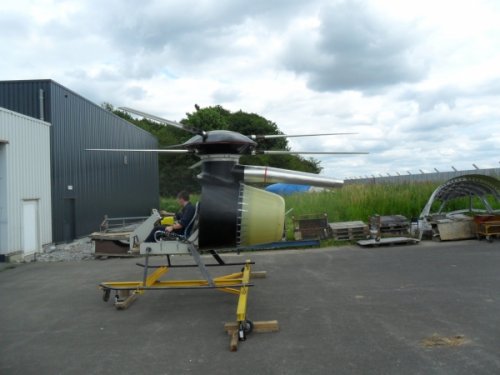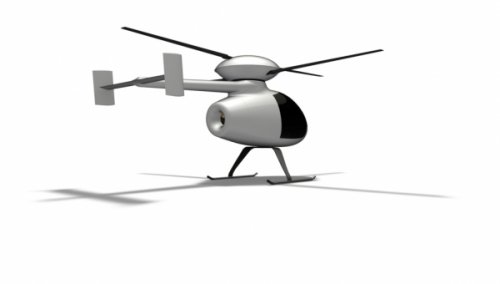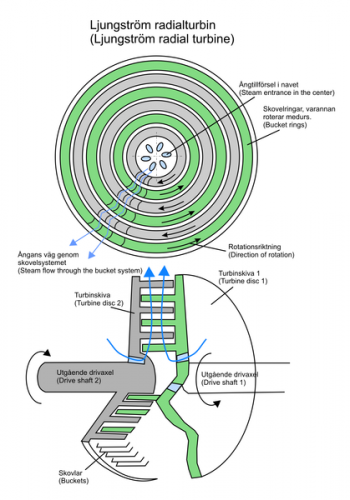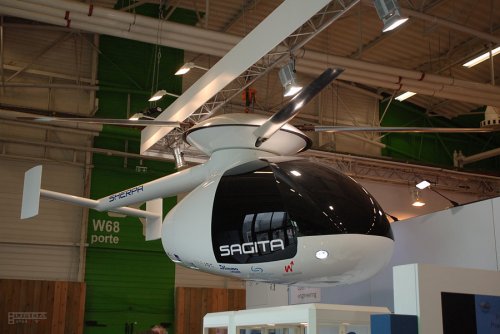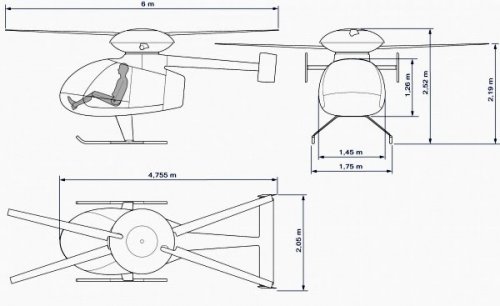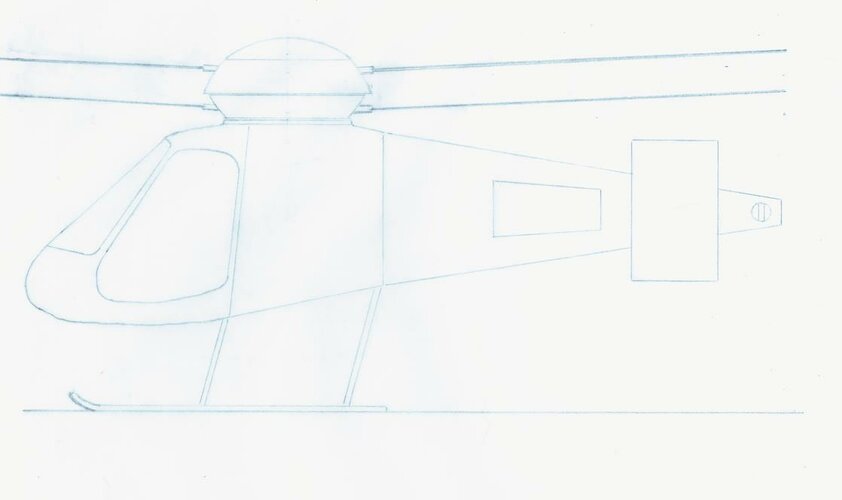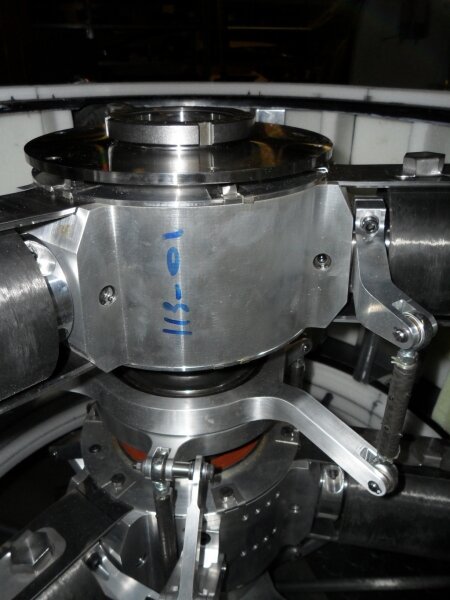Sagita is a Belgian consortium of some sort, founded in 2008. They're showing a full scale mockup of their Sherpa very light helicopter at Paris this year. The powertrain is pretty unconventional, starting from the compressor inlet being pointed towards the rear. The rest of it seems to have something to do with hybrid boundary layer driven turbines, but that's more or less a guess on my part. Contra rotating lifting props, so no need for a tail rotor. Not too much to be found online about the Sherpa, but a cursory search did return a link to a Flightglobal story from 2009, so at least there's that. Might be worth a little buzz.
Two images from Sagita's website, and one of a "Ljungström turbine" CC attribution share alike by "Lidingo" from Wikimedia Commons.
Quote from "How does it work?" Tech section:
Two images from Sagita's website, and one of a "Ljungström turbine" CC attribution share alike by "Lidingo" from Wikimedia Commons.
Quote from "How does it work?" Tech section:
- The engine drives a compressor that takes in air at the rear of the fuselage.
- Part of the compressed air feeds the engine, the balance bypasses the engine, collects the heat of the cooling system and is eventually mixed with the engine's exhaust gases in order to raise the temperature to 100°C (212 °F).
- The hot compressed air is then sent to the rotor and expanded in two contra-rotating Ljungström type turbines.
- Each of these turbines drives directly one of the two contra-rotating coaxial rotors. The air exits the turbine through a circumferential gap between the two rotors.
- The transmission system requires no lubrification (sic), no cooling and no tail rotor drive. Its efficiency is about 85%.

